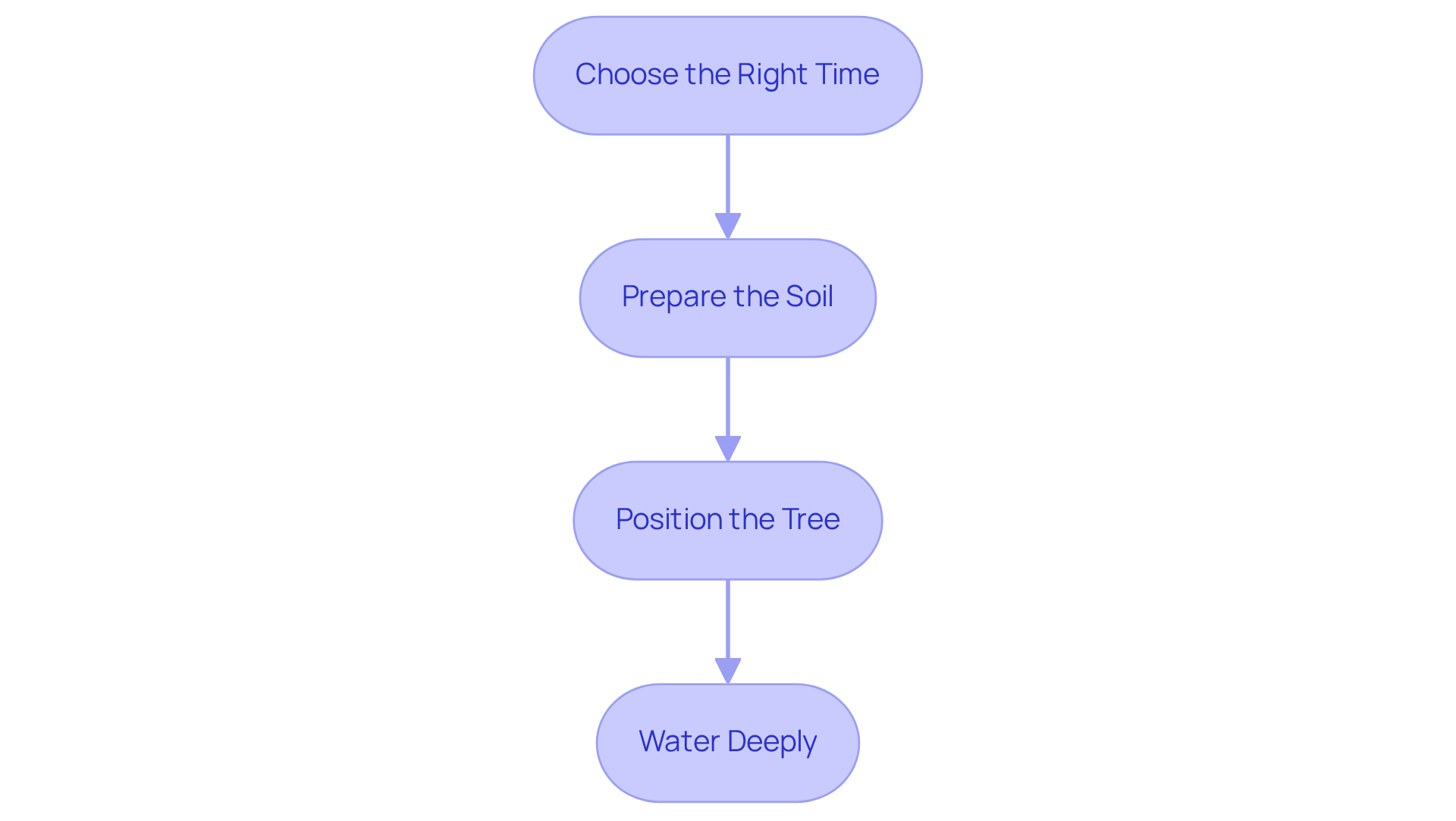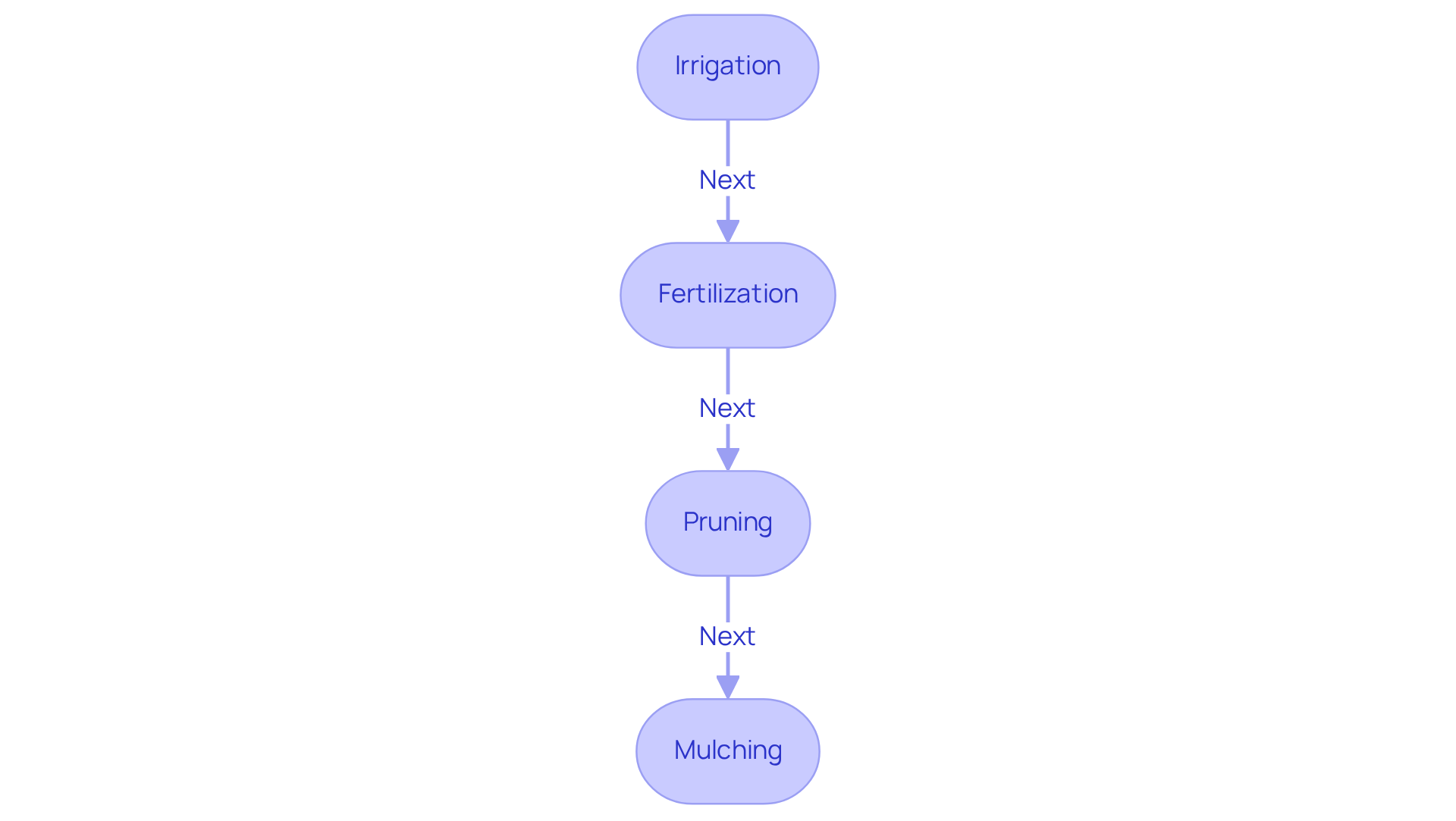The achacha fruit tree, scientifically known as Garcinia humilis, stands out as a tropical gem that flourishes in warm, humid climates. This captivating tree not only enhances the beauty of gardens but also offers a bountiful harvest. To fully appreciate the gardening experience, it is essential to understand the specific growing conditions, care practices, and common challenges associated with cultivating this unique tree.
When ideal conditions are not met, or when pests and diseases threaten the health of these vibrant plants, what steps should gardeners take? This guide explores the essential strategies for successful growth and care of the achacha tree, ensuring that both novice and seasoned gardeners can reap the rewards of their efforts.
Thinking about growing an Achacha Tree in your garden?
Explore Achacha Plant for sale at Everglades Farm - shipped directly from Florida.
1. Understand the Growing Conditions for Achacha Trees
Garcinia humilis is a tropical fruit tree that thrives in warm, humid environments, with a preferred temperature range of 60°F to 90°F (15°C to 32°C). These plants can reach an impressive height of 12 feet or more, flourishing in well-draining, fertile soil rich in organic material that maintains a slightly acidic to neutral pH.
When choosing a planting site, it is crucial to ensure it receives full sunlight for at least six hours daily, as sufficient light is essential for optimal growth. Additionally, humidity plays a vital role in their development; these plants thrive in humid conditions. In arid regions, consider enhancing humidity levels by misting or using a humidifier to create a more favorable microclimate for your plants.
Horticulturists emphasize that maintaining these conditions is essential for successful cultivation and fruit production. Notably, these plants are self-fertile but benefit from cross-pollination, which can enhance fruit yield.
Young plants require watering several times a week, while mature ones should be watered approximately once a week to a common concern among gardeners. With proper care, Garcinia humilis is relatively easy to cultivate and can provide a rewarding addition to your garden.

2. Plant the Achacha Tree Properly
- Choose the Right Time: The optimal moment to plant the achacha fruit tree is in the spring, following the last frost. This timing allows the plant to develop its foundations efficiently before the summer heat arrives, fostering healthy growth. By planting at this time, you ensure that the tree can establish itself in a favorable environment.
- Prepare the Soil: For successful planting, dig a hole that is twice the width and equal in depth to the ball of the plant. Enrich the dug-up earth by blending it with compost or organic matter, which improves both fertility and drainage. This creates a favorable environment for the plant's base, ultimately supporting its growth and health.
- Position the Tree: Center the tree in the hole, ensuring that the top of the ball is level with the surrounding ground. Carefully refill the hole with the prepared earth, gently compacting it to eliminate any air pockets that could obstruct plant growth. Proper positioning is crucial for the tree's stability and nutrient access.
- Water Deeply: After planting, give a to assist in settling the ground around the plants. It's essential to keep the soil damp without water saturation, as these plants are especially vulnerable to excessive moisture, which can result in root decay. Adequate watering practices are vital for the tree's establishment and long-term health.

3. Maintain and Care for Your Achacha Tree
- Irrigation: For the initial six weeks following planting, water your fruit plant every three days. After this period, adjust the schedule to once a week, and during the winter months, reduce watering to every two weeks. These plants require approximately 0.8 cups of water every 9 days when not exposed to direct sunlight and placed in a 5.0" pot. It is crucial to ensure the soil remains consistently damp but not waterlogged, as the achacha fruit tree is sensitive to excessive watering, which can lead to root decay.
- Fertilization: Apply a balanced organic fertilizer every 6-8 weeks during the growing season. Choose fertilizers enriched with mycorrhizal fungi and beneficial bacteria, as these components are essential for promoting robust root development and overall plant health. Studies indicate that organic fertilizers significantly enhance the growth and yield of tropical fruit plants, making them a preferred choice among gardeners.
- Pruning: Trim the achacha fruit tree after the harvest season to maintain its shape and eliminate any dead or diseased branches. This practice not only improves air circulation but also , contributing to a healthier plant. Aim to create an open crown during pruning to facilitate light and air penetration.
- Mulching: Apply a layer of organic mulch around the base of the plant to retain moisture, suppress weeds, and regulate soil temperature. Ensure that the mulch is kept about 10 inches away from the trunk to prevent rot, thereby allowing the plant to thrive in a well-maintained environment.

4. Troubleshoot Common Issues in Achacha Cultivation
- Pest Management: Achacha fruit trees can be susceptible to pests such as aphids and scale insects, particularly the White Peach Scale, which can adversely affect their health. To ensure early detection of infestations, regular inspections of leaves and stems are crucial. If pests are identified, treatments with insecticidal soap or neem oil can effectively address the issue. Additionally, applying paraffin oil or Eco Oil during the dormancy period can help manage White Peach Scale, promoting the overall well-being of your plants.
- Leaf drop in the achacha fruit tree is often associated with improper watering practices. Overwatering can lead to saturated soil, suffocating the roots, while inadequate watering results in dry conditions. Prolonged low temperatures may also cause leaves to turn light green and yellow due to nutrient absorption challenges. To remedy this, routinely check soil moisture levels; if the soil feels excessively wet, reduce watering, and if it is dry, increase the frequency of watering to maintain optimal moisture levels.
- Fungal Diseases: Fungal infections are more common in humid environments. To prevent these issues, ensure adequate air circulation around the plant and avoid overhead watering, which can create a damp atmosphere conducive to fungal growth. Should infections occur, applying Kocide Blue Fungicide as directed can help manage the spread and protect the plant's health.
- Yellowing leaves may signal in your achacha fruit tree. Conducting a soil test can provide valuable insights into pH and nutrient levels, facilitating appropriate amendments. Incorporating organic fertilizers can help restore nutrient balance and encourage healthy foliage growth. It is also important to recognize that young achacha fruit trees require more frequent watering than established achacha fruit trees, which should be watered approximately once a week.
Conclusion
Successful cultivation of the Achacha fruit tree depends on a thorough understanding of its specific growth requirements and the provision of appropriate care. By ensuring optimal conditions—such as temperature, sunlight, and soil quality—gardeners can create a thriving environment for Garcinia humilis. This careful attention leads to fruitful yields and healthy plants.
Key aspects of Achacha tree care include:
- Proper planting techniques
- Consistent watering schedules
- Timely fertilization
Furthermore, regular maintenance practices like pruning and mulching are essential in promoting robust growth and preventing common issues such as pests and diseases. By proactively addressing the needs of the tree, gardeners can mitigate potential challenges and enhance the overall health of their Achacha trees.
Embracing the journey of growing Achacha trees not only enriches the garden but also offers the chance to enjoy the unique flavor of this tropical fruit. With the right knowledge and dedication, anyone can cultivate these remarkable trees and reap the rewards of their labor. Whether you are a seasoned gardener or a novice, following the steps outlined in this guide will ensure that your Achacha tree flourishes and contributes to a vibrant, fruitful landscape.
Grow Your Own Achacha Trees and Taste the Tropics!
Start your gardening journey with Everglades Farm and enjoy fresh fruit from your backyard.
🛒 Buy Achacha Fruit Tree
Frequently Asked Questions
What is Garcinia humilis and where does it thrive?
Garcinia humilis, commonly known as the Achacha tree, is a tropical fruit tree that thrives in warm, humid environments, with a preferred temperature range of 60°F to 90°F (15°C to 32°C).
What are the ideal soil conditions for growing Achacha trees?
Achacha trees flourish in well-draining, fertile soil that is rich in organic material and maintains a slightly acidic to neutral pH.
How much sunlight do Achacha trees need?
Achacha trees require full sunlight for at least six hours daily for optimal growth.
Why is humidity important for Achacha trees?
Humidity is vital for the development of Achacha trees, as they thrive in humid conditions. In arid regions, it may be necessary to enhance humidity levels by misting or using a humidifier.
Do Achacha trees require cross-pollination?
While Achacha trees are self-fertile, they benefit from cross-pollination, which can enhance fruit yield.
How often should young and mature Achacha trees be watered?
Young Achacha trees require watering several times a week, while mature trees should be watered approximately once a week to prevent issues such as root rot.
Is it difficult to cultivate Garcinia humilis?
With proper care, Garcinia humilis is relatively easy to cultivate and can be a rewarding addition to your garden.





0 comments